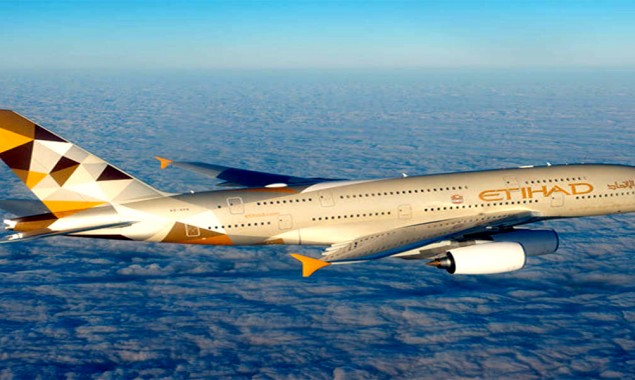
Etihad Airways
In a move towards sustainable aviation, Etihad Airways has committed to purchasing carbon offsets to counter the CO2 emissions of its flagship “Greenliner” 787-10 aircraft for the entire year of operations in 2021.
According to the details, the project is the start of the airline’s journey to reduce CO2 emissions to 50% of 2019 levels by 2035, and to achieve full net zero emissions by 2050.
Etihad Airways has become first for any airline in the Gulf and one of the first to set a target of this scale in the industry.
Etihad’s Greenliner carbon offset program is centered on a Tanzanian forestry project and will initially purchase 80,000 tonnes of CO2 offsets.
Earlier in September, European multinational aerospace company Airbus revealed new concepts for the World’s first zero-emission commercial aircraft.
According to Airbus, the aircraft will touch the skies in 2035. All of the three concepts represent a different approach to achieve a zero-emission flight by exploring various technology pathways and aerodynamic configurations with an aim of decarburization of the entire aviation industry.
All of these concepts rely on hydrogen as a primary power source. According to Airbus, this power source is an option that Airbus believes holds exceptional promise as clean aviation fuel.
A Turbofan Design
This aircraft has the capacity of (120-200 passengers) with a range of 2,000+ nautical miles, capable of operating transcontinentally and powered by a modified gas-turbine engine running on hydrogen, rather than jet fuel, through combustion.
The liquid hydrogen will be stockpiled and distributed via tanks located behind the rear pressure bulkhead.
A Turboprop Design
A turboprop design having the capacity of up to 100 passengers using a turboprop engine instead of a turbofan and also powered by hydrogen combustion in modified gas-turbine engines.
This, Airbus said would be capable of traveling more than 1,000 nautical miles, making it a perfect option for short-haul trips.
Blended-Wing Body
Airbus said that the “blended-wing body” design has the capacity of up to 200 passengers and in this design, wings merge with the main body of the aircraft with a range similar to that of the turbofan concept.
The wide fuselage opens up multiple options for hydrogen storage and distribution, and for cabin layout.
Read More News On
Catch all the Business News, Breaking News Event and Latest News Updates on The BOL News
Download The BOL News App to get the Daily News Update & Follow us on Google News.




